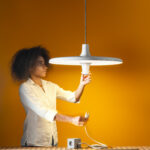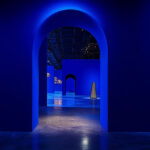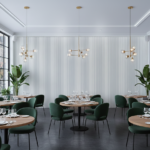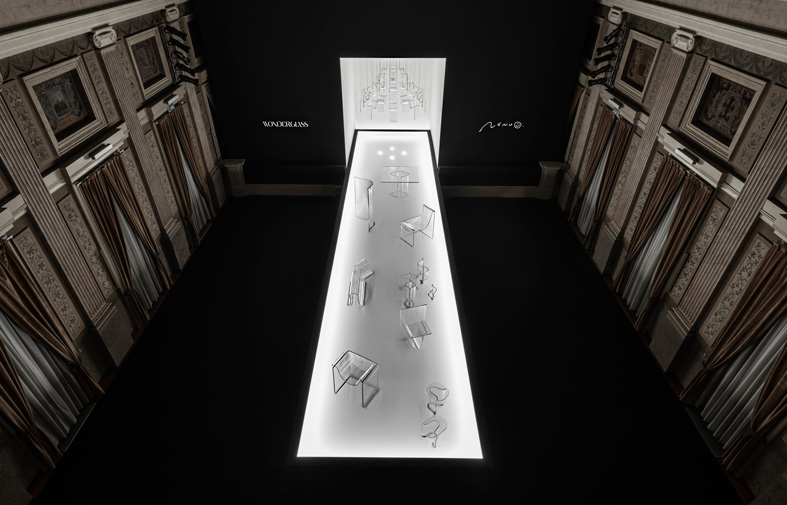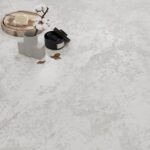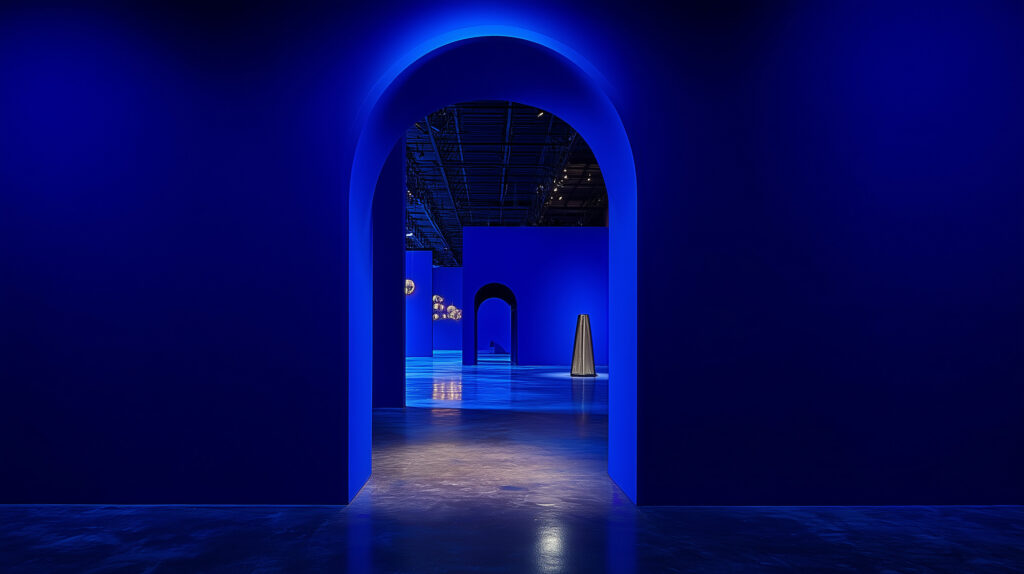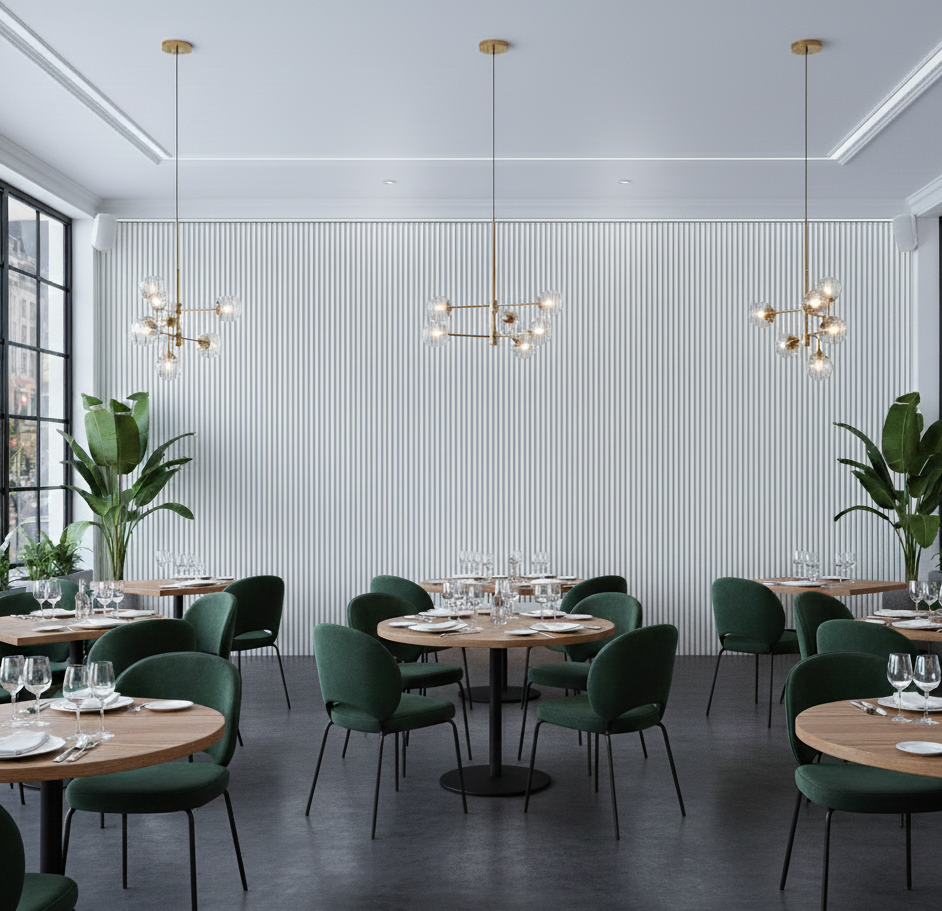Glass is widely appreciated for different reasons. It is natural and recyclable, virtually infinite, even though with different techniques. Thanks to different processing technologies, glass appearance can be unique and distinctive, with decorations and colors expressing the high level of technology embodied in the material itself. From Milan Design Week 2019, some of the finest glass products and exhibitions.
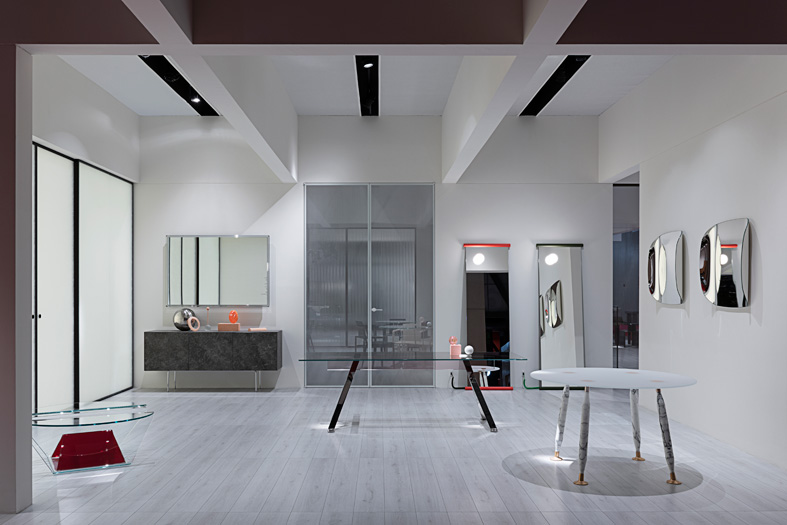
The glass inspired by ancient traditions by Fiam
Fiam‘s technological research, as an example, made it possible to create the DV laminated glass, used for the Waves collection by Roberto + Ludovica Palomba, which features glass as a base for a walnut top, in a sculptural table in different sizes.
Fiam‘s constant research, started in 1973, led to the creation of italian design icons, such as the Ghost armchair by Cini Boeri, and it keeps on reinventing itself, with increasingly surprising furnishings elements, such as the Cannage table by Emmanuel Gallina, or the Coral Beach table by Mac Stopa, where the tactile dimension rules the material.
Cannage is inspired by woven cane, in a pattern enhancing the 3D surface of the glass, while Coral Beach is inspired by sand beaten by water, in a movement recreated thanks to traditional workmanship combined with 3D printing.
Interior design by Glas Italia
Founded in Brianza (north of Milan) in the early Seventies, Glas Italia produces collections of glass furniture and interior design, developing the experience of a century-old family glass factory. The company applies the most advanced technologies for increasingly high quality products: UV adhesives, digital prints on large sheets, embossed engravings, sandblasting, tempering and layering with colored films, fabrics and metal mesh.
The LA Sunset coffee table by Patricia Urquiola, with its painted metal tube structure and laminated glass top, with mirrored base, focuses on color and the combination of different materials. The colors blend like fluids, seamlessly between the structure and the top.

Again from Glas Italia, the Sherazade Patchwork series by Piero Lissoni is a new collection of doors and walls which reinterprets the “cathedral glass”. Doors and walls are framed in rectangular squares, which combine different colors for a “Bauhaus” effect, or create walls in transparent glass, to create separate spaces without visual partitions.
The ancient techniques revived by Wonderglass
Wonderglass, an English brand founded in 2012 by Christian and Maurizio Mussati, Italians, revives ancient processing techniques such as cast glass, revisited by contemporary designers.

Cast and molten glass and light are the focus of Wonderglass’s production, which creates small works of art such as the vases in the Alcova series by Ronan & Erwan Bouroullec, or impressive lights such as those by Marcel Wanders presented in Milan in 2017.
A complete collection of cast glass furniture, including armchairs, chandeliers and tables, is the one designed by Nendo for 2019, introduced with an impressive exhibition at the Istituto dei Ciechi, during the Milan Design Week. The “dramatic” spirit is a constant in the settings of Wonderglass, which focuses on creating special pieces for large-scale public spaces.
Tonelli Design: the structural glass
Thick glass panes, welded and glued, shape the basis of the projects by Tonelli Design, a brand from Pesaro founded in 1988. Precision technology and special adhesives, which allow the glass to be completely transparent, allow to have furniture and accessories with a great look, as well as unexpected functions.

For 2019, Tonelli Design introduced Paradigma, designed by De Bona/De Meo, a large freestanding bookcase, consisting of a central glass grid and a “frame” of thin sheet metal, interlocking, arched or full circle. Emilio Nanni, meanwhile, considered orthogonality and on this basis designed Sestante, a collection of tables, consoles and benches with a modular structure which allows many different settings, and is also available with digitally printed graphics.

